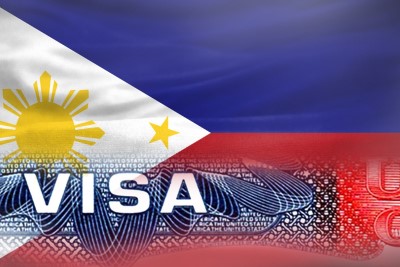
As of 2020, the Philippines is the fourth-largest origin country for immigrants in the U.S. after Mexico, India, and China. According to the Migration Policy Institute, migration from the Philippines to the United States has been on the rise since the late 19th century.
However, employment-based visa categories are not the main pathway historically preferred by Filipino immigrants; according to the Department of Homeland Security, the majority of Filipino immigrants with permanent residency status in the U.S. migrated through family-based visa options.
As for employment-based preferences, the most popular pathway among Philippine nationals has typically been the EB-3 immigrant visa. Following a 15-year backlog in this category that had started in 2004, the final action date for the Philippines became current in July 2019. The EB-5 program has yet to reach a similar level of popularity in the Philippines as of 2021, however, as the sixth-largest country of origin for new permanent residents in the United States, the country holds potential as one of the strongest immigration markets in the world.

EB-5 visa statistics for Philippine nationals
Compared to the popularity of family and other employment-based visa options, the EB-5 visa, according to some professionals, is rather overlooked in the Philippines as a pathway to U.S. permanent residency.
While more than 5,000 employment-based visas were issued to Philippine nationals in FY2020 according to the annual report of the U.S. Department of State, the total number of EB-5 visas issued was 9; a decline from the previous year.
The status of EB-5 in the Philippines
The United States has long benefited from a growing influx of Filipino immigrants, most notably in specific professional contexts such as healthcare. This deep-rooted tradition of migration can be considered one of the reasons behind the popularity of employment-based visas in the Philippines, as well as the abundance of educational opportunities. Additionally, there have been ongoing efforts in recent years to raise public awareness in the country regarding the EB-5 program in particular.
As is the case with the majority of EB-5 markets in the world, the regional center pathway to investing in the United States is more popular in the Philippines, according to the State Department’s data.
Are there any special benefits or challenges for Filipino EB-5 applicants?
The long-established political, social, and educational ties between the Philippines and the United States are widely regarded as a benefit for Filipino immigrants. Data drawn from the U.S. Census Bureau’s American Community Survey indicates that Filipinos are more likely to have strong English proficiency and high college education rates than other immigrants overall. The presence of a wide Filipino community, especially in California—which was home to 43% of the Filipino population in the U.S. according to pooled 2014-2018 Census Bureau data—may also be considered a benefit for EB-5 applicants from the Philippines.
What is the current retrogression situation?
According to the State Department’s monthly visa bulletins, the Philippines has never faced a retrogression issue in the EB-5 category. In the November 2021 Visa Bulletin, the final action date for the country remains current, with no backlogs estimated to take place in the near future.
Source of funds issues for Philippine nationals
While due diligence and a carefully conducted source of funds process is advised to all EB-5 applicants, there are no specific source-of-funds challenges awaiting Filipino investors. However, the Bangko Sentral ng Pilipinas (BSP), the central bank and regulating body of financial transfers in the Philippines, requires written declaration to move more than $10,000 in foreign currencies out of the country.
What does the future hold for Filipino EB-5 investors?
Even though the pandemic has dramatically affected visa issuance and adjudication processes worldwide, the relatively steady numbers of EB-5 visas issued to Filipino investors in FY2018 and FY2019 indicate that the popularity of EB-5 may rise in the upcoming years among Philippine high net worth individuals. While the popularity of other employment-based immigrant visas currently surpasses the employment fifth category in the Philippines, in the near future, Filipino applicants may benefit from the advantage of filing from a promising Southeast Asian EB-5 market that has not yet suffered backlogs, oversubscription and long wait times, thus suggesting high approval rates and a convenient path to obtaining U.S. permanent residency.






